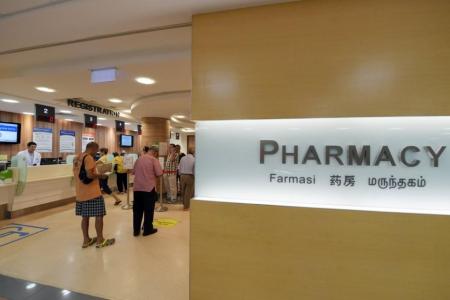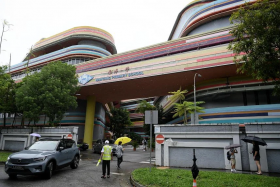MOH releases new guidance for 11 drugs
The information will help doctors and patients pick cost-effective, proven or superior drugs based on evidence
The Ministry of Health (MOH) has published its guidance on a first lot of drugs to help doctors and patients pick cost-effective, proven or superior drugs, with information on drug subsidies if any.
Of the 11 drugs for which the guidance was issued by the Agency for Care Effectiveness (Ace) yesterday, nine have subsidies that will cost the Government millions of dollars a year.
This first tranche includes drugs to treat cancer, diabetes and stunted growth in children.
The guidance includes not just advice on the use of the drug, but also why it is of good value, whether subsidies are available and the cost to the Government, among other things.
Each year, public sector doctors request subsidies for 40 to 50 drugs. About half are subsidised, with no explanations on how the decision is made.
For the first time, MOH is sharing its decision-making process.
Dr Daphne Khoo, executive director of Ace and an endocrinologist by training, said the team looks at the long-term value of the drug and assesses whether it is superior to what is being used and how much more it costs for the extra benefit it gives.
"It's not about whether it is expensive or cheap, but rather the value of the drug," she said, explaining that cost is relative to the drug providing "a year of good perfect health".
It's not about whether it is expensive or cheap, but rather the value of the drug.Dr Daphne Khoo, executive director of Ace
Dr Khoo said it is difficult for doctors to keep up with all the new drugs available and to know if they are better.
For instance, Ace looked at rivaroxaban, a blood thinner, and decided that it would provide value only at a certain price. There are three different brands, but doctors said they work the same.
The team approached the pharmaceutical companies and chose the one that agreed to reduce its price.
In this case, the team also went a step further and set a cap of $3.08 for rivaroxaban sold in the public sector. Public hospitals were previously charging $4.40 to $5.70 for a day's supply.
Means-tested patients get a 50 per cent or 75 per cent subsidy under the Medication Assistance Fund.
MOH hopes that by sharing information on drugs that give value, it can slow spiralling healthcare costs while providing patients with more effective medicine.
In developed countries, it is estimated that $1 out of $3 spent on healthcare is wasted, such as on drugs that do not give value for money or are not really effective.
The decision on whether to provide a subsidy, and how much, is made by the Drug Advisory Committee - made up of various specialists - and is based on Ace's assessment on the value of the drugs.
Associate Professor Benjamin Ong, MOH's director of medical services, said: "While medical technology has enabled us to live longer and better, such improvements have almost always resulted in rising healthcare costs.
"Ace's work is critical to enable the identification of treatments with good outcomes at affordable prices for our patients.
"This will help ensure that our healthcare system remains both effective as well as sustainable for future generations."
More guidance will be out in October.
Ace, which was set up in 2015, expects to release three lots of drug guidance a year.
Dr Stanley Liew, a diabetes specialist from Raffles Hospital, welcomed the guidance.
He said: "This framework of critical appraisal of new health technologies is accountable, transparent and evidence based."
Pharmaceutical company Roche - its targeted breast cancer drug Herceptin is now subsidised - hailed the decision, saying that one in four breast cancer patients here can be treated with this drug.
FOR MORE, READ THE STRAITS TIMES TODAY
Get The New Paper on your phone with the free TNP app. Download from the Apple App Store or Google Play Store now




